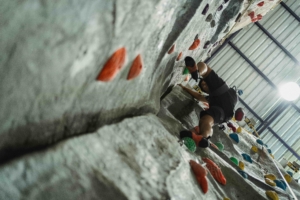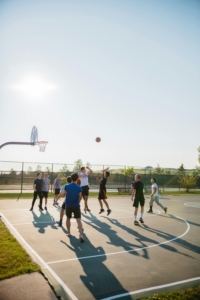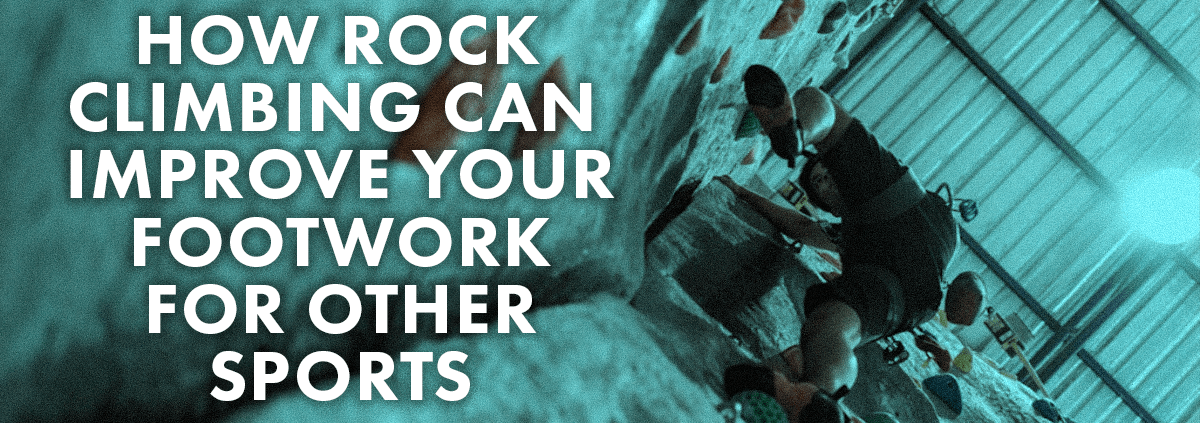How Rock Climbing Can Improve Your Footwork for Other Sports
Here’s a secret: the key to efficient climbing is good footwork, not muscular biceps or massive lats. Anyone looking in on the rock climbing world from the outside wouldn’t pick up the slight difference in foot placement that lets one climber send a boulder and another climber crashing to the pads. But every sport has fundamentals, and footwork is one for rock climbing. Look up information on drills for rock climbing, and half of them will focus on footwork. It is also a critical skill in many other sports, such as avoiding defenders in soccer, executing choreography in dance, and quick direction changes in tennis or badminton. If you inquire into the athletic histories of most climbers in a modern-day climbing gym, you’ll find that many come from athletic backgrounds. Many of them are likely actively engaged in a second or third sport. Ask around in a climbing gym, and whether it’s a soccer league, running, boxing, dancing, or gymnastics, there’s likely a rock climber who also participates in the other sport.
 Why discuss the importance of footwork in climbing and mention climbers’ multi-sport nature? Because as a multi-sport athlete, time is of the essence. Amidst all your commitments, being able to improve your footwork for multiple sports simultaneously is a game-changer. If you’re a busy person and a multi-sport athlete, then knowing that rock climbing can improve your footwork for your other sports is fantastic news! Keep reading for a breakdown of how this is possible.
Why discuss the importance of footwork in climbing and mention climbers’ multi-sport nature? Because as a multi-sport athlete, time is of the essence. Amidst all your commitments, being able to improve your footwork for multiple sports simultaneously is a game-changer. If you’re a busy person and a multi-sport athlete, then knowing that rock climbing can improve your footwork for your other sports is fantastic news! Keep reading for a breakdown of how this is possible.
Rock Climbing Can Improve Your Footwork for Other Sports
Hand-Foot Connection and Coordination
Most sports require some degree of hand-foot coordination. Even in a sport like running, seemingly all legs, efficient running form incorporates holding and swinging your arms in specific ways. To ascend a climb efficiently, you must learn to push/pull with your feet and toes while pulling upward with your arms. More often, competition-style boulders go so far as to demand you land your feet on a particular hold or in a specific position (i.e., catching a toe hook) while aiming for a hold with your hands. The more comfortable you become with simultaneously engaging your hands and feet while climbing, the more adept you’ll be at combining movements and mastering your coordination in other areas.
Explosiveness
Rock climbers can perform powerful jump moves, commonly known as dynos. One key to a successful dyno is placing your feet where you can generate explosive power. Think of the long jump in track and field or a jump shot in basketball. Each movement requires you to land your feet in a specific stance before springing out/up, just like you will do when committing to a dyno.
Single-Leg Power
Outside dynos (see the section on explosiveness), climbers rarely move both feet simultaneously. Instead, you must stand up on one foot, which requires single-leg power and a secure foot placement. As the foot holds grow smaller on more challenging climbs, honing in placement and shifting enough weight onto your foot will make or break your send. That’s why pistol and Cossack squats are popular exercises to incorporate into strength training plans for climbers. If you play a sport involving running or sprinting, the single-leg power you develop climbing will transfer over, enhancing your ability to generate and transfer force quickly.
Balance
Because rock climbs most often operate in a one-hand, one-foot movement pattern, the non-active limbs help you balance your center of gravity. The flag and back flag are two climbing-specific moves that require understanding how to actively engage one leg and foot for stability while maneuvering the foot and leg. The most straightforward example of this skill translating outside of rock climbing would be in dance or gymnastics. Think ballerinas spinning continuously on one foot or gymnastics pivoting on the balance beam. Another example is striking a ball in soccer or pivoting around defenders in football or basketball.
You can love rock climbing and other sports, leveraging one to benefit the other. Skilled footwork is a common denominator among athletes from all backgrounds, feeding into the athlete’s ability to balance, generate power, and move explosively or with effortless coordination. Although it may not be apparent initially, rock climbing provides a training ground for those footwork-based abilities, allowing you to fulfill your love for both sports with less training time. If you’ve experienced any transferable skills from rock climbing to other sports, please share the details below (footwork-related or not)!



